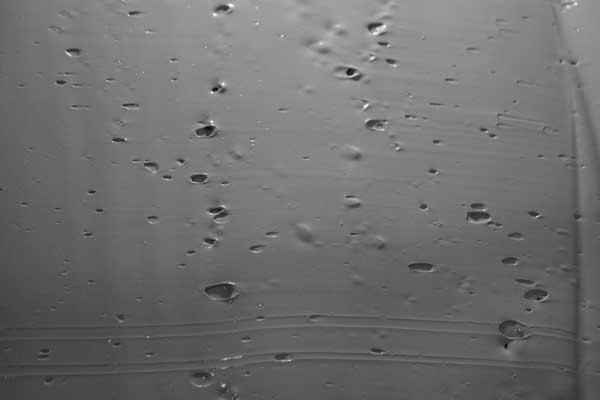Experiments
We posit that relatively shallow basins were created as surface features during the energetic deflation of steam inclusions in the ejecta blanket; effectively “popped bubbles”. The assortment of bay sizes and geospatial distributions within bay clusters is a direct result of a physical fractal processes, as the frothy slurry spread downrange. An assumed high-temperature and high-pressure emplacement created stratum that, while unconsolidated, has maintained its structural integrity.
An experiment to re-create this effect directly has not yet been attempted. We believe a slurry above 100ºC would be required . Alternatively, a slurry using sand and frozen carbon dioxide may be a useful test. Failing those routes, we have taken simple photographs of large sheets of soap foam floating on water. By stretching the photographs to generate ovals, we have produced graphics which closely simulate the pay planforms and size distributions seen on the earth. These were colorized to simulate landscape.

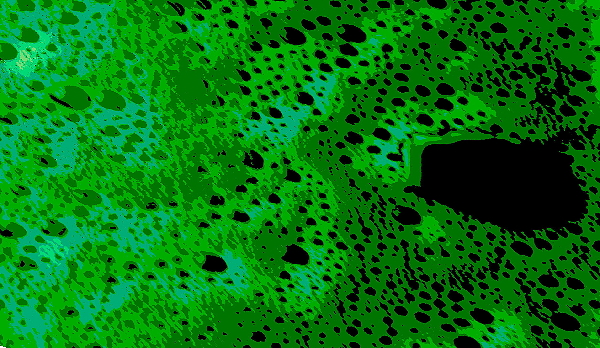
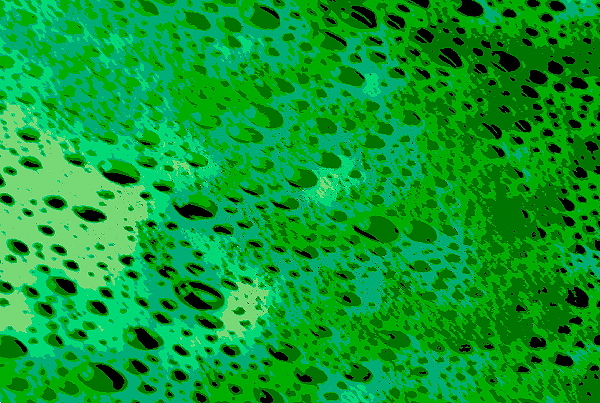
During the proof phase of the hypothesis, we performed several experiments to validate the ejecta formation model.
The first test was to attempt the splash distribution of highly hydrous material. This was done using a very thin mixture of gypsum wallboard compound. The material was thrown approximately 3 meters at a sheet of cardboard. The resulting deposits are shown here.
The natural ridging around the structure as the material spreads out on impact can be clearly seen here. The reader may associate with this form, as it is identical to the well-recognized paint splatter.
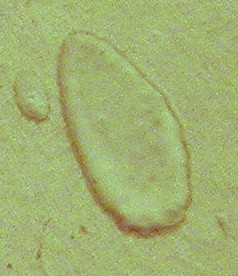
Here is a broader view of a splatter field. The item above is visible in the center right. Note that with very viscous splatters, there is a potential to have a down-range inversion, where the broad section of the ejecta emplacement is down-range vs. up-range. A shortcoming in our experimental technique is the reality that the "loft time" may not be long enough to recreate the aerodynamic effects that would effectively create spheroid splatter droplets.

Using slightly stiffer material in larger size droplets, we see structures that take on more vertical dimension.
We have witnessed events where a substantial section of the ejecta droplet will break away from the main mass and impact further away. In between, it is possible to generate a 'figure eight" structure, akin to pulling taffy into a thin joining section.
Next we test stiffer material using 6" balls of compound. A movie is available to illustrate the process, please click on the picture below.
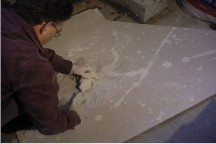 Quicktime movie.
Quicktime movie.Some additional experimental results when "spreading" very hydrous clay. Here, pockets of included air are broken and spread during the process.

